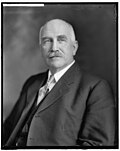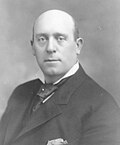| 1908 presidential election | |
  Nominees Bryan and Kern | |
| Convention | |
|---|---|
| Date(s) | July 7–10, 1908 |
| City | Denver, Colorado |
| Venue | Denver Auditorium Arena |
| Candidates | |
| Presidential nominee | William J. Bryan of Nebraska |
| Vice-presidential nominee | John W. Kern of Indiana |

The 1908 Democratic National Convention took place from July 7 to July 10, 1908, at Denver Auditorium Arena in Denver, Colorado.
Contents
- The convention
- Presidential nomination
- Presidential candidates
- Vice presidential nomination
- Candidates
- Speculated candidates
- See also
- References
- External links
The event is widely considered a significant part of Denver's political and social history.
























